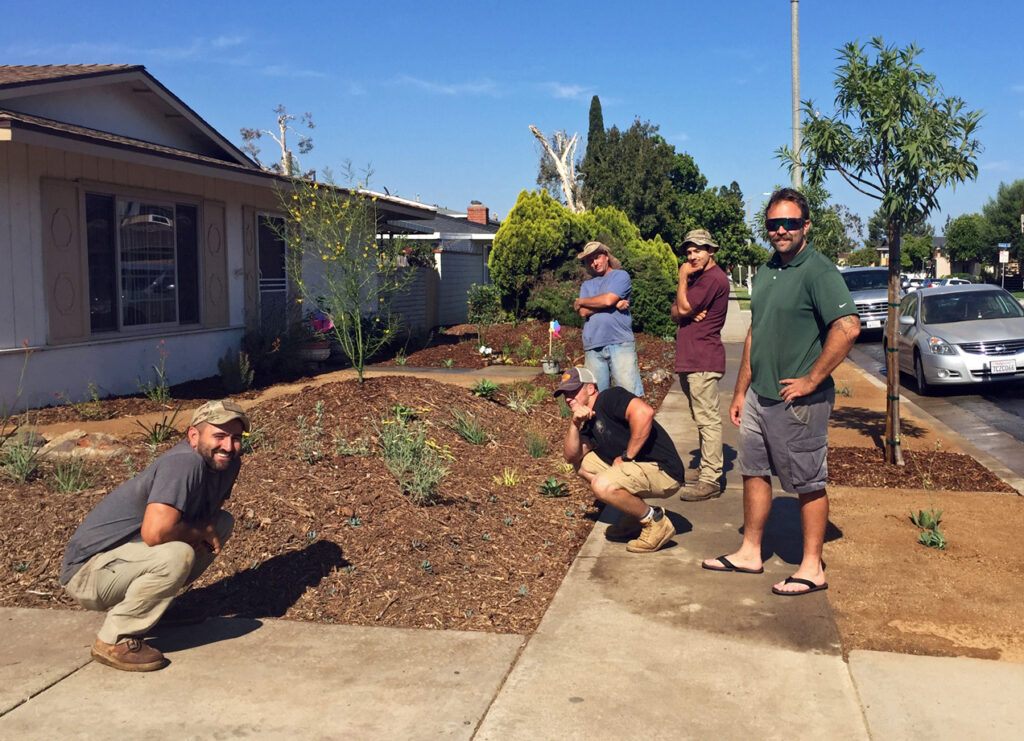The Foundation of Natural Balance
Native plants are those that occur naturally in a region in which they evolved, and they serve as the cornerstone of healthy ecosystems across the globe. Unlike non-native species that have been introduced from other regions, native plants have spent thousands of years developing intricate relationships with local wildlife, soil conditions, and climate patterns. This evolutionary partnership has created a delicate web of interdependence that supports all life within an ecosystem.
The significance of native plants extends far beyond their aesthetic appeal in natural landscapes. Biodiversity is essential to the existence and proper functioning of all ecosystems, and native plants serve as the primary foundation for this biodiversity. When we understand the critical role these plants play, we begin to appreciate why their conservation and integration into human-dominated landscapes is essential for environmental health and sustainability.
Over the past century, urbanization has taken intact, ecologically productive land and fragmented and transformed it with lawns and exotic ornamental plants. The continental U.S. lost a staggering 150 million acres of habitat and farmland to urban sprawl, creating an urgent need to restore native plant communities wherever possible.
Supporting Wildlife and Biodiversity
Critical Food Web Relationships
One of the most compelling arguments for native plants lies in their role as the foundation of food webs. Research by the entomologist Doug Tallamy has shown that native oak trees support over 500 species of caterpillars whereas ginkgos, a commonly planted landscape tree from Asia, host only 5 species of caterpillars. When it takes over 6,000 caterpillars to raise one brood of chickadees, that is a significant difference.
This dramatic difference illustrates a fundamental ecological principle: native plants have co-evolved with native insects over millennia, creating specialized relationships that cannot be replicated by non-native species. By contrast, many native herbivore species are likely to become locally extinct rather than adapt to non-native plants when the latter displace natives. The loss of insects blocks the flow of energy from plants up the food chain, negatively affecting ecosystem function.

Pollinator Support and Plant Reproduction
Native plants provide nectar for pollinators including hummingbirds, native bees, butterflies, moths, and bats. These pollination relationships are often highly specialized, with some plants depending entirely on specific pollinator species for reproduction. The monarch butterfly’s dependence on milkweed plants exemplifies this relationship, where the butterfly’s entire life cycle is tied to native milkweed species.
Native plants provide nectar and pollen for butterflies, birds, for native and introduced bees, and for some species of bats. Bees, butterflies, birds, and bats facilitate the growth of native plants, agricultural crops, and landscaping plants by carrying pollen from plant to plant. This mutual relationship ensures the continuation of both plant and pollinator species.
Habitat Creation and Wildlife Shelter
Beyond providing food, native plants create essential habitat structures that wildlife depends upon for survival. Native plants provide shelter and nesting habitats for birds, while their varied heights, textures, and growth patterns create microhabitats for countless species of insects, small mammals, and reptiles.
Plant roots that are both fibrous and widespread (such as those belonging to buffalo grass or little bluestem) are crucial in the stabilization of topsoil, particularly in flood prone areas. This root structure also creates underground habitat for soil organisms that form the base of terrestrial food webs.
Environmental Services and Climate Benefits
Water Conservation and Management
Native plants offer significant advantages in water management, particularly important in an era of increasing water scarcity. Because native plants are adapted to local environmental conditions, they require far less water, saving time, money, and perhaps the most valuable natural resource, water.
Native plants are adapted to the Pacific Northwest’s dry summers, however, and their deep root systems actually increase the soil’s ability to soak up and store water. Compared to lawns, native landscapes absorb more water and reduce flooding. This water management capacity becomes increasingly critical as climate change brings more intense precipitation events and longer drought periods.
As highlighted by experts in drought-tolerant landscaping, incorporating native plants into landscape design significantly reduces water consumption while supporting local ecosystems. Professional landscapers increasingly recognize that native plant communities create more resilient landscapes that can withstand environmental stresses.

Soil Health and Erosion Control
Native plants have deep root systems that help to improve soil health by increasing soil organic matter and reducing erosion. These extensive root networks create channels that improve soil aeration and water infiltration while binding soil particles together to prevent erosion.
Common aquatic plants such as cattail can absorb and recycle pollutants before they assimilate into rivers and streams. Without the protective barriers of native riparian plants, the waters of the United States would be inundated with eroded soil and pollutants, with devastating results for our drinking water and freshwater ecosystems.
Carbon Sequestration and Climate Action
Many native plants, especially long-living trees like oaks and maples, are effective at storing the greenhouse gas carbon dioxide, contributing to climate change mitigation efforts. Native grasslands, in particular, store significant amounts of carbon in their extensive root systems and associated soil organic matter.
Native plants are pollution-free, and actually help remove carbon from the air and store it in the soil. This carbon storage capacity, combined with their reduced maintenance requirements, makes native plants powerful tools in addressing climate change.
Ecosystem Stability and Resilience
Evolutionary Relationships and Ecological Harmony
Plants that evolve together will eventually develop an efficient means of co-existing in which one plant’s growth habits will not interfere with the other, thus creating harmony in the ecosystem. When plants that do not “know” each other meet, they will almost always form an inefficient, destructive relationship in which one or both plants are killed or damaged.
This evolutionary compatibility extends beyond plant-to-plant relationships to include the entire ecosystem community. Native species have evolved over time in response to the specific conditions of their environment and have established relationships with other species within that ecosystem. These relationships form a complex web of interactions that help maintain the ecosystem’s stability and functioning.
Disease and Pest Resistance
Native plants don’t need pesticides. They are hardy and adapted to native pests, and native plants support beneficial insect populations, which provide natural pest control without chemicals. This natural resistance reduces the need for chemical interventions that can harm beneficial species and contaminate soil and water resources.
The co-evolutionary relationship between native plants and local pest species has resulted in balanced predator-prey relationships that prevent any single species from becoming problematic. Non-native plants often lack these natural controls, making them more susceptible to pest outbreaks.

Economic and Human Health Benefits
Reduced Maintenance and Cost Savings
Once established, native plants generally require little maintenance, translating to significant cost savings over time. Natural landscapes require much less maintenance than manicured lawns and ornamental bushes, reducing the need for mowing, fertilizing, watering, and pest control.
Professional landscaping services that specialize in sustainable design practices often emphasize how native plant landscapes reduce long-term maintenance costs while providing superior environmental benefits compared to traditional landscaping approaches.
Human Health and Well-being
The traditional suburban lawn, on average, has 10x more chemical pesticides per acre than farmland. By choosing native plants for your landscaping, you are not only helping wildlife, but you are creating a healthier place for yourself, your family, and your community.
Human health can be positively affected simply by spending time in outdoor environments, which has been linked to increases in life satisfaction and happiness, and decreases in blood pressure, anxiety, and cardiovascular disease symptoms. Native plant gardens provide opportunities for nature connection and environmental education.
Conservation and Restoration Implications
Addressing Habitat Fragmentation
By creating a native plant garden, each patch of habitat becomes part of a collective effort to nurture and sustain the living landscape for birds and other animals. In increasingly fragmented landscapes, every native plant installation serves as a stepping stone for wildlife movement and genetic exchange between populations.
Using locally grown native plants in your landscape makes your yard part of the larger ecosystem. Your plants provide genetic diversity to nearby wild plant populations, which are the foundation of healthy, resilient ecosystems. This connectivity is essential for maintaining viable wildlife populations in human-dominated landscapes.
Preventing Invasive Species Establishment
Many exotic plants have become invasive pests, outcompeting native species and degrading habitat in remaining natural areas. By choosing native plants, landowners actively prevent the introduction and spread of potentially invasive species while supporting the ecological integrity of their local environment.
The conversion of native plant communities into plant assemblages dominated by non-native species is one of the most ubiquitous threats to biodiversity today. Reversing this trend through native plant restoration is crucial for biodiversity conservation.
Research Support for Native Plant Benefits
Recent scientific research provides overwhelming evidence for the superiority of native plants in supporting ecosystem function. One hundred and twenty studies found that native plants outperform non-native plants on the response metric evaluated in the study, while relatively few studies showed advantages for non-native species.
We found overwhelming evidence that native plants support higher faunal abundance and diversity than non-native plants in urban landscapes. This research conclusively demonstrates that the common arguments for using non-native plants in landscaping are not supported by scientific evidence.
Looking Forward: The Future of Native Plant Integration
As climate change and urbanization continue to challenge natural ecosystems, the importance of native plants becomes even more pronounced. Native plant diversity provides ecosystem services, or process by which the environment produces resources that we often take for granted including the regulation of carbon and terrestrial water cycles.
The native plant and natural landscape movement exemplifies this by promoting the restoration of ecosystems that support not only biodiversity but also the health of our communities. By integrating native plants into our landscapes, we strengthen ecosystem resilience and ensure that future generations inherit environments capable of supporting both human and natural communities.
Professional landscaping services that understand the importance of water conservation and ecosystem support are leading the way in demonstrating how native plants can create beautiful, functional landscapes that serve both human needs and environmental goals.
The evidence is clear: native plants are not just beneficial to ecosystems, they are essential. Their role in supporting biodiversity, providing ecosystem services, and maintaining ecological stability makes them irreplaceable components of healthy environments. As we face unprecedented environmental challenges, embracing native plants in our landscapes represents one of the most effective actions we can take to support ecosystem health and resilience. Every garden, park, and green space that incorporates native plants contributes to a larger network of habitat that helps sustain the intricate web of life that supports us all.
